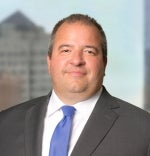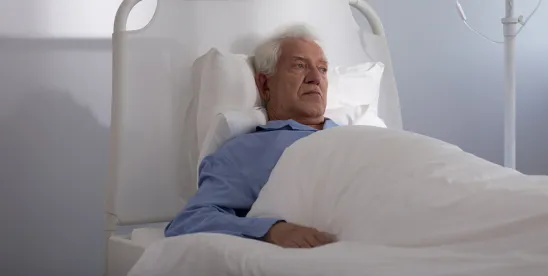The Wisconsin Department of Health Services (DHS), Division of Quality Assurance (DQA), Bureau of Assisted Living (BAL), released updated guidance regarding the use of electronic recording, video monitoring, and filming equipment (collectively, “Monitoring Devices”) in assisted living settings. The goal of this guidance is to balance the use of emerging technologies with residents’ rights to privacy in their homes. This guidance applies to Wisconsin Adult Family Homes (AFHs), Community-Based Residential Facilities (CBRFs), and Residential Care Apartment Complexes (RCACs).
Key Takeaways for Providers
1. General Considerations
DHS emphasizes that while technology can enhance safety, it must not infringe on the statutory and regulatory rights of residents. The guidance differentiates between provider-initiated and resident-initiated use of Monitoring Devices. In general, providers may use Monitoring Devices in very limited circumstances while residents and their legal representatives may use Monitoring Devices within a resident’s private living space with limited restrictions.
2. Provider-Initiated Monitoring and Recording
AFH and CBRF residents have a right to privacy in their care and treatment, accommodations, and communications. These privacy rights are non-waivable and providers cannot obtain a variance to allow an exception to these rights. As such, AFH and CBRF providers are strictly prohibited from using Monitoring Devices in the following areas, even with a resident’s informed, written consent:
- Resident bedrooms;
- Bathrooms and shower rooms;
- Dining, therapy, visiting, lounge, activity, and multipurpose rooms;
- Hallways leading to resident rooms; and
- Any space where residents meet visitors, eat, sleep, engage in activities, discuss or receive care, treatment or therapy.
RCAC residents have similar non-waivable privacy rights. As such, RCAC providers are strictly prohibited from using Monitoring Devices in the following areas:
- The resident’s private apartment;
- Areas where personal, supportive, or nursing services are provided; and
- Spaces where residents receive visitors or participate in social activities.
However, providers may use Monitoring Devices in the following areas so long as the provider posts clear signs indicating Monitoring Devices are in use:
- Parking areas;
- Facility entrances and exits;
- Employee-only areas (e.g., break room, medication room);
- Storage areas;
- Hallways not leading to resident rooms or activity areas; and
- Personnel offices inaccessible to residents.
Providers may not require residents to consent to monitoring as a condition of admission or the receipt of services. Similarly, residents cannot be asked to waive privacy rights in admission, service, or risk agreements. Use of Monitoring Devices in cooperation with law enforcement is only permitted on a case-by-case basis with proper legal authorization.
3. Resident-Initiated Monitoring and Recording
In general, residents or their legal representatives have the right to install Monitoring Devices in a resident’s private living space. However, family members may not implement the use of Monitoring Devices unless agreed to by the resident or resident’s legal representative. The decision to use a Monitoring Device when a resident has an activated power of attorney for health care should be based on the health care needs of the resident. BAL encourages providers to engage in dialogue with the resident or legal representative to explore the purpose, benefits, risks, and alternatives to using a Monitoring Device.
Providers cannot prohibit a resident’s use of a Monitoring Device if it occurs within the resident’s own space. Providers must not obstruct audio or video when desired monitoring is occurring. Providers cannot deny admission, discharge a resident, or refuse to provide care to a resident due to the presence of a Monitoring Device.
Additional requirements:
- If a resident has a roommate, the roommate’s consent (or their legal representative’s consent) is required for the resident or legal representative to use any Monitoring Devices.
- The resident and roommate may place conditions on when or where a Monitoring Device is used.
- Providers should encourage legal representatives to strongly consider a reasonable person's expectation of privacy in bathrooms or shower rooms before placement of a Monitoring Device in these areas.
- Residents must post clear signage by the entrance to the resident’s private living space indicating monitoring is taking place.
- Usage should be reviewed at least annually and upon changes in a resident’s needs, abilities, or conditions.
4. Facility-Owned Devices for Individual Resident Needs
Facilities may use Monitoring Devices to meet a specific resident’s needs, such as part of a therapeutic care plan. However:
- Use must be based on person-centered individual assessments and documented in the care plan.
- Consent from the resident or legal representative is required.
- Monitoring Devices must never replace adequate staffing or be used as a general surveillance measure.
- All protections and conditions outlined for resident-initiated use above also apply.
5. Next Steps for Providers
To remain compliant with Wisconsin statutes and administrative rules, providers should:
- Remove all Monitoring Devices from prohibited areas;
- Review and update your facility’s admission and services agreements, policies, and resident handbooks to reflect this guidance;
- Train staff on the appropriate and prohibited use of Monitoring Devices;
- Establish protocols for responding to resident-initiated requests to use Monitoring Devices; and
- Ensure consent and documentation requirements are met before using any Monitoring Devices.
6. Additional Resources
- WI DHS DQA BAL Guidance
- Wisconsin Board on Aging and Long Term Care, Office of the State Long Term Care Ombudsman:




 />i
/>i

